
Buongiorno, amici! After a bit of a hiatus, I am so happy to be talking with you about Italy again. On every trip to Italy, we try to visit somewhere new, in addition to sentimental favorite locations. Last time, we skipped the Emilia-Romagna region– too many other places to go! We just couldn’t cram it in between Tuscany and Veneto, oh well. In retrospect, this was a woefully nonchalant dismissal of one of Italy’s most outstanding foodie destinations. After doing subsequent research on Italian cuisine, I found myself saying, “Oh! I didn’t know this was from Bologna.” “Wow, that’s from Modena?” “Tortellini comes from this region too??” After many such realizations, Bologna was quickly expedited to the top of the list for the next trip. And a great decision it was; I think that if I had to choose the cuisine of one Italian region as my favorite, Bolognese cuisine would be it. Now, before I get into specific dishes, let me first address a great American misconception: There is no such thing as Spaghetti Bolognese! Just as “Spaghetti and Meatballs” and “Fettuccine Alfredo” are made-up American dishes, so is “Spaghetti Bolognese”, aka spaghetti with meat sauce. If you ever see it on a menu in Italy, the restaurant caters to what they think tourists want, rather than authentic Emilia-Romagna food. What you *will* find (and which I imagine Spaghetti Bolognese was based on) is tagliatelle al ragù. Tagliatelle are flat noodles that are precisely 5cm across, according to our food tour guide, and are hearty enough to stand up to the chunky meat ragù. The “ragù” of which I speak is the traditional “Bolognese” meat sauce of your dreams (actually, probably better than your dreams). It is typically made from some combination of pork/veal/beef and is extraordinarily flavorful. If you’re lucky, you may also find it served over meat-stuffed tortellini, as we did at Trattoria Tony— one of the best pastas I’ve ever tasted in my whole life! (Seeing a jar of Ragù brand pasta sauce in the States makes me cringe– that stuff doesn’t even begin to resemble what a real ragù is!)
I feel like I should tell you a little more about Bologna. I didn’t do as much research as I would have liked before our trip, so I wasn’t quite sure what to expect there. After a week in the quaint, rural villages of Tuscany, I was a bit overwhelmed by Bologna. It’s not that it was huge or chaotic or anything like that; on the contrary, it is much less touristy than Italy’s more high-profile cities, since many people either don’t know about it or pass it up in favor of Rome/Venice/Florence. Many Italian cities, such as the stunning, medieval Siena in Tuscany, consist of a compact, walled old city surrounded by a larger, more modern city. The old cities are often paved with cobblestones, contain meandering passageways or staircases, and have so many nooks and crannies to explore! They can be hard to get around by car and are not the most hospitable to modern amenities, and I imagine that it would be difficult to live there, although plenty of people do it.
But Bologna caught me off-guard. It does indeed have a core walled city, but it was much larger than anticipated, and I was delighted to find a lovely integration of both ancient and new. Alongside gorgeous buildings surviving from medieval and Renaissance times are gelato shops, high-fashion stores, and contemporary restaurants. It didn’t hit me over the head with Italy’s most amazing and recognizable monuments, but there are impressive marvels of art and architecture everywhere you look, whether they be grand fountain sculptures, gothic details on building façades, fresco paintings on ceilings, or intricate decorated columns. I was especially enamored with the porticos that cover many of the sidewalks (about 40 kilometers’ worth, apparently)– they are not only beautiful and elegant, but also provide much-appreciated relief from the blazing summer sun! Some streets are paved, while narrow stone pedestrian walking areas retain the charm of centuries earlier; you can imagine that these streets haven’t changed much over time, and that people have been carrying home their fresh fruits and vegetables from the medieval market on those very stones and walkways since the stones were laid. Like so many cosmopolitan European cities, Bologna’s streets are lined with restaurants bustling late into the evening, the store windows are dressed à la mode, and the air is thick with history. It is a city full of vibrance, culture, learning (University of Bologna is the oldest university in the western world), food, and art– and four days wasn’t anywhere near enough time to take it all in. We barely scratched the surface, and I can’t wait to come back. The city is very livable– I would be thrilled to live here!
But let’s get back to talking about food, shall we? One of the reasons that our time felt very limited is because we spent one of our four days on a food tour in the Modena area, where we visited producers of Parmigiano-Reggiano cheese, balsamic vinegar, and prosciutto. In learning how each of these products is made step-by-step, I gained a hell of a food education that day! Our charismatic tour guide, Alessandro from Italian Days tours, first explained about the European Union’s designations of origin, D.O.P. and I.G.P., which are lengthy, painstaking, detailed processes to ensure quality, traceability, and authenticity of the product. We occasionally hear about olive oil scandals or other fraudulent food situations in the news; when you buy a D.O.P. product, you know you’re getting the real thing. For example, you may have seen “Balsamic Vinegar of Modena” in your American supermarket, right? We were assured by Alessandro that this is not real Balsamic Vinegar of Modena by any stretch! To be designated D.O.P., vinegar must be aged in a “battery” of wood barrels (batteria in Italian), following a specific process, for a minimum of 12 years, with some even aged for 25 years, and then it must be inspected and approved as D.O.P.; anything not adhering to this strict process is not true Balsamic Vinegar of Modena. (And some producers try to employ sneaky tactics to make a cheap, inferior product that can pass as the real thing.) The typical grocery store stuff is thin, acidic, and well, very vinegary, but aged vinegar has a thicker, syrupy consistency and takes on a fascinating and complex sweetness– it is a completely different animal.
Products that are high-quality, but don’t quite meet D.O.P. standards may be sold under lesser designations, such as I.G.P., and even among certified products there is always a range of quality. Furthermore, you can buy a 6-year aged product called “Balsamic Condiment”, which doesn’t meet the standard for D.O.P. or I.G.P., but is still much better than the thin stuff– it’s perfect for salad dressing, whereas you want to use top-quality vinegar for finishing and accenting a plate. This essay could go on for pages– Parmigiano-Reggiano cheese and prosciutto must go through their own respective production and aging processes to earn D.O.P. status, which includes origin, treatment, and raising of animals. (Milk cows and pigs must be born, raised, and slaughtered in Italy for D.O.P. products.) We tasted cheese that was aged 24 months, the minimum for D.O.P., which was crumbly, firm, and salty. We also tasted cheese that was aged for 12 months, but wasn’t up to snuff after D.O.P. inspection, and must therefore be served immediately; this cheese was creamier, softer, and less salty– more pleasant to snack on in my opinion. It was fascinating to compare and contrast them side-by-side! In short (if one could call this the short version), learning about and pondering this whole process has taken my food-nerditude to a whole new level. 😉
Armed with this knowledge, I began to look at the foods we saw and ate differently. Was a bottle of olive oil worth its price if it wasn’t D.O.P., and could I know for sure that it was *extra-virgin* if the label claimed to be? Where did the prosciutto on this-or-that restaurant’s menu come from? In general, I feel that even basic grocery store cheese, dairy, and salumi products in Italy are much higher quality than in the U.S., but I appreciate the high standards that have to be met in order to earn such a prestigious status. The D.O.P. designation ensures that products adhere to traditional methods of producing food, thereby securing the culture and legacy of those foods. While of course badly made food exists everywhere, Italy (and much of Europe) possesses a greater respect and reverence for actual, real food than in America, where our government subsidizes and protects corporations that peddle mass-produced food, rather than rewarding artisan production of good-quality products.
So, what else did I eat in Bologna besides cheese and salumi? So. Much. Pasta. We already talked about the delicious ragù situation, but this is not the only mindblowing pasta in town. I mentioned tagliatelle (roughly ‘tal-ya-TEL-leh‘; the ‘gl’ produces a sound similar to ‘lya‘) and tortellini, which are traditional pasta shapes of this region. You will find them served in various preparations, such as the classic tortellini in brodo, aka in broth. If you ask me, it is comfort food 100% on par with chicken noodle soup! (Maybe even better, but that feels a little sacrilegious to my Jewish culture.) The tortellini that I daydream about the most was served during the EPIC lunch that concluded our food tour– dish after dish after dish was placed before us, each one special and different, and illustrative of the region’s charmed cuisine. This particular tortellini was stuffed with cheese and served with parmigiano-reggiano and a drizzle of the magical Balsamic Vinegar of Modena. Tears, people, there were tears– it was an emotional experience. I also had an incredible rigatoni con melanzane e pomodori (eggplant and tomatoes), very reminiscent of the life-altering pasta alla norma that I’d had in Sicily two years prior. There were also:
- Passatelli: short, shaggy stumps (for lack of a better description) formed by passing the pasta dough through a potato ricer
- Triangoli: stuffed triangles
- Spaghetti alla chitarra: squared-off long noodles made by passing the dough through a tool with a bed of cutters reminiscent of guitar strings
- Gramigna: short, curly tubes often served alla salsiccia (with sausage sauce)
- Lasagne verdi: green spinach pasta is very common in Bologna, particularly layered with luxurious bechamel sauce and meat
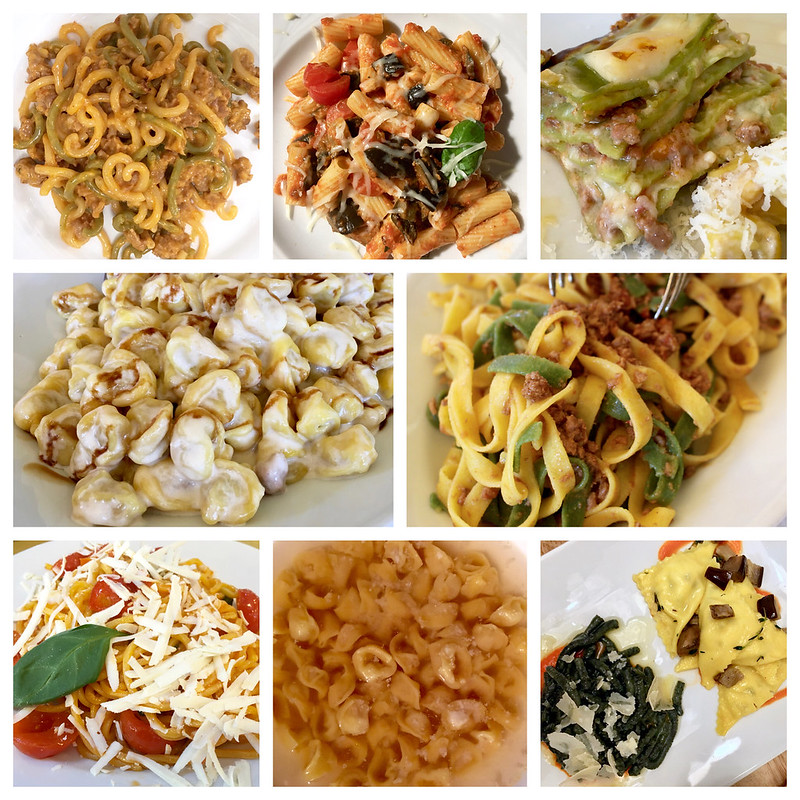
Clockwise from top-left: Gramigna alla salsiccia at Ristorante Donatello, rigatoni con melanzane e pomodori at Ristorante Pizzeria Victoria, lasagne verdi at Ristorante Ciano Bonfiglioli, tagliatelle al ragù with two kinds of tagliatalle at Ristorante Ciano Bonfiglioli, triangoli con melanzane and passatelli neri (squid ink) con pesto rosso at Sfoglia Rina, tortellini in brodo at Drogheria della Rosa, spaghetti alla chitarra at Trattoria Tony, tortellini con parmigiano-reggiano e balsamico at Ristorante Ciano Bonfiglioli.
Like I said, an impressive quantity of pasta was consumed… with zero regrets! I found the Bolognese cuisine to be on the heavy side, but so very pleasing to the soul. 🙂
Incidentally, a number of other new-to-me dishes were served at this lunch, including a beautiful array of fried antipasti: squash blossoms, zucchini strips, fried custard cubes (so much yes), polenta sticks, and some very glorious fried tortelloni, i.e. big-ass cheese-filled tortellini. Also presented were tigelle (small flatbread disks typically split open and filled with cured meats or spreads), bistecca al rosmarino (rosemary steak), and probably some other stuff that I don’t remember because I was overwhelmed with equal parts ecstasy and disbelief at the tantalizing plates that continued to appear.
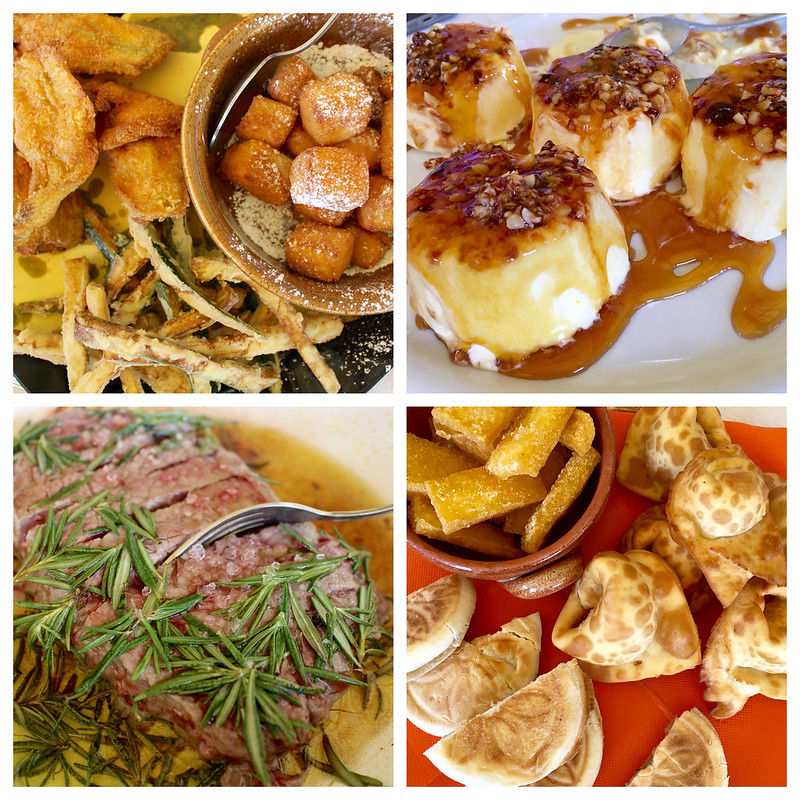
Clockwise from top-left: Platter of deep-fried antipasti, semifreddo con croccanti, fried polenta sticks and tortelloni alongside tigelle, bistecca al rosmarino.
On the sweet side, the highlights were a tasty panna cotta con cioccolato, strawberry gelato, semifreddo con croccanti (with crunchy topping), and most unexpectedly, a delicious torta di riso, or “rice cake”. If your face just crunched into a confused or perhaps horrified expression, let me explain– it is completely different than what Americans think of as a “rice cake”, i.e. piece of cardboard made from rice that may or may not be edible. This could not be farther from an Italian torta di riso. In fact, there are several types of rice-based cakes in different regions. For example, a Tuscan torta di riso is a slice of rice pudding/cheesecake heaven (I’m currently trying to recreate one), but this Bolognese one caught me completely by surprise. On a different tour, we did a tasting of torta di riso at Paolo Atti e Figli, and I immediately regarded my little diamond-shaped “cake” with suspicion. It is not pretty, let’s just be frank; this cake is not winning pastry beauty contests. (I didn’t even bother taking pictures.) It is a short, yellowish, custardy thing studded with mushy-looking grains of rice– I know, I’m not exactly selling it very well! But hear me out. If you can get past the appearance, you will be delighted by a creamy, orange-scented revelation, I promise. I tasted just a small sliver, and I left wanting a big piece and a spoon. (Sure, because that’s how an Italian would eat it… not.)
I did my best to find a recipe that approximates what I ate in Bologna. Is it the same? Nope. Is it still pretty good and a sweet reminder of the special cuisine of Bologna? Yep. Give it a whirl for an authentic bit of Bologna in your kitchen.
This is the 7th installment of my series on Italian regional desserts. Start here for an intro to Italian regional cuisine, my experiences traveling in Italy, and information about Italian pantry items for baking. Next is a visit back to Puglia, because there’s so much more to say!
Torta di Riso Bolognese
Riffed from Cucina Fanpage and my memory from Paolo Atti e Figli
Yields about 24 servings
- 1 vanilla bean or 1 tablespoon pure vanilla bean paste
- 1 liter (4¼ cups) whole milk
- A few strips of lemon peel (yellow part only)
- 200 grams (1 cup minus 1 tablespoon) arborio rice
- 4 eggs, at room temperature
- 200 grams (1 cup) granulated sugar
- 100 grams (1 cup) blanched almonds, finely chopped
- 75 grams (½ cup) candied orange peel, finely chopped
- 1 teaspoon cinnamon
- 1-2 teaspoons amaretto liqueur, optional
- Confectioners’ sugar, for garnish
If using a whole vanilla bean, split it lengthwise and scrape out the seeds. Pour the milk into a medium saucepan and add the lemon peel and both the vanilla seeds and pod (or vanilla bean paste). Bring the milk to a boil over medium-low heat, then add the rice and bring it back to a boil. Reduce the heat to low and cover the pot; cook the rice until most of the milk has been absorbed, about 30-40 minutes, stirring occasionally to prevent the rice from burning on the bottom. It should be very creamy, but not liquidy. Remove the lemon peel and vanilla pod, if applicable. Transfer the rice to a large bowl to cool to room temperature. (Or spread it in a thin layer on a rimmed sheet pan to expedite the cooling.) The creamy texture will firm up further as the rice cools.
Meanwhile, preheat an oven to 350°F and position a rack in the center. Line a 9″ square baking pan with a large sheet of parchment paper so that it overhangs on all sides.
In a large mixing bowl, beat the eggs with the sugar using a hand mixer on medium speed for about 2 minutes. The mixture should be frothy and puffed. Add the rice, almonds, orange peel, and cinnamon, and stir everything together with a wooden spoon or rubber spatula, making sure to break up any clumps of rice. Stir in the amaretto liqueur, if using. (Two teaspoons yields a strong almond extract flavor; if it’s not your favorite, use just 1 teaspoon.)
Pour the rice batter into the prepared baking pan and bake for about 50 minutes. The top surface will form a delicate, golden crust. Set the pan over on a wire cooling rack and let it cool to room temperature.
Pull the cake up and out of the pan using the overhanging parchment paper. The cake is traditionally cut into small diamonds and served with a toothpick, though feel free to cut it into simple squares. When cutting, either grease your knife or have a paper towel handy to wipe it after each cut, as the rice will want to pull away and stick to the knife. Sprinkle the torta generously with confectioners’ sugar if desired.
Store any leftover cake tightly covered in the refrigerator for up to 3 days.
© Dafna Adler & Stellina Sweets, 2018.
SaveSaveSaveSave
SaveSave
SaveSave




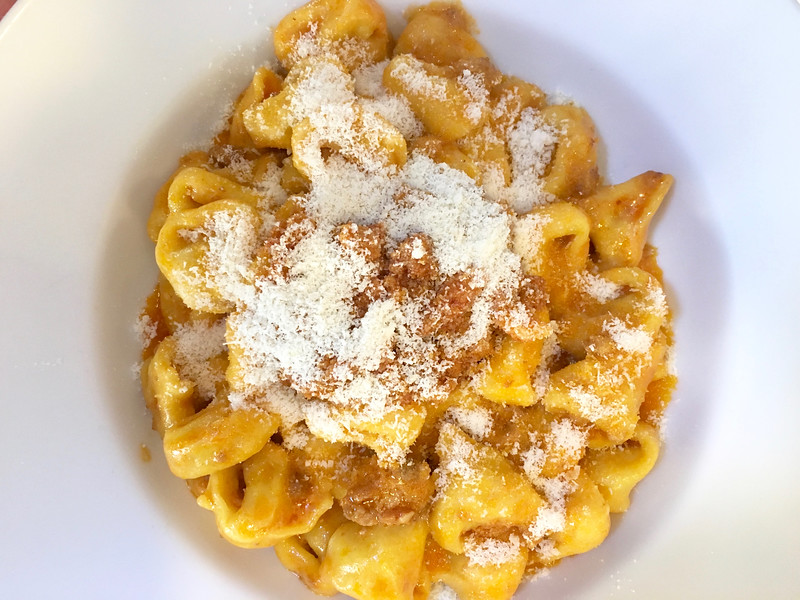

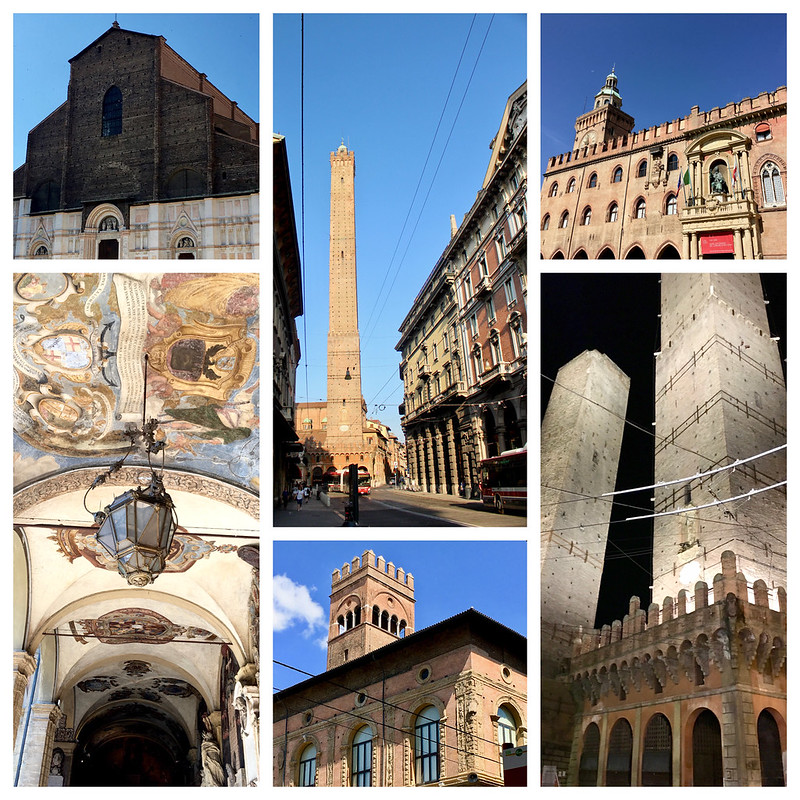

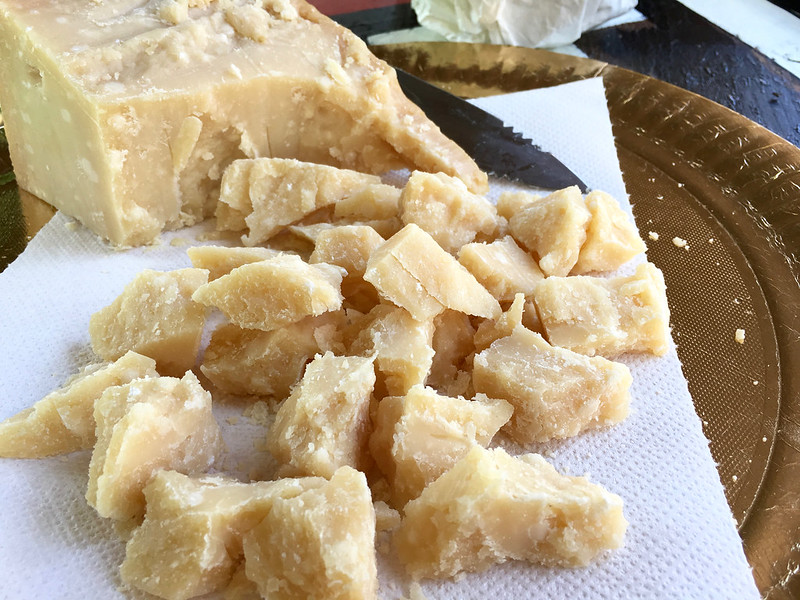

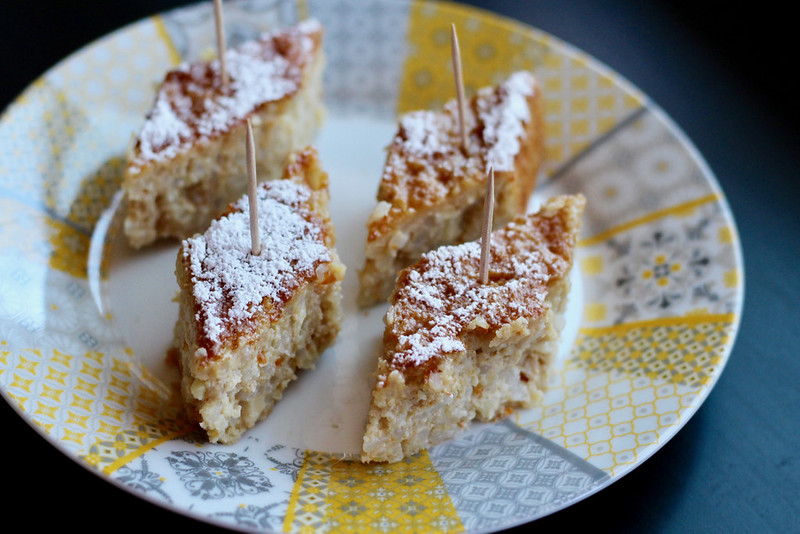

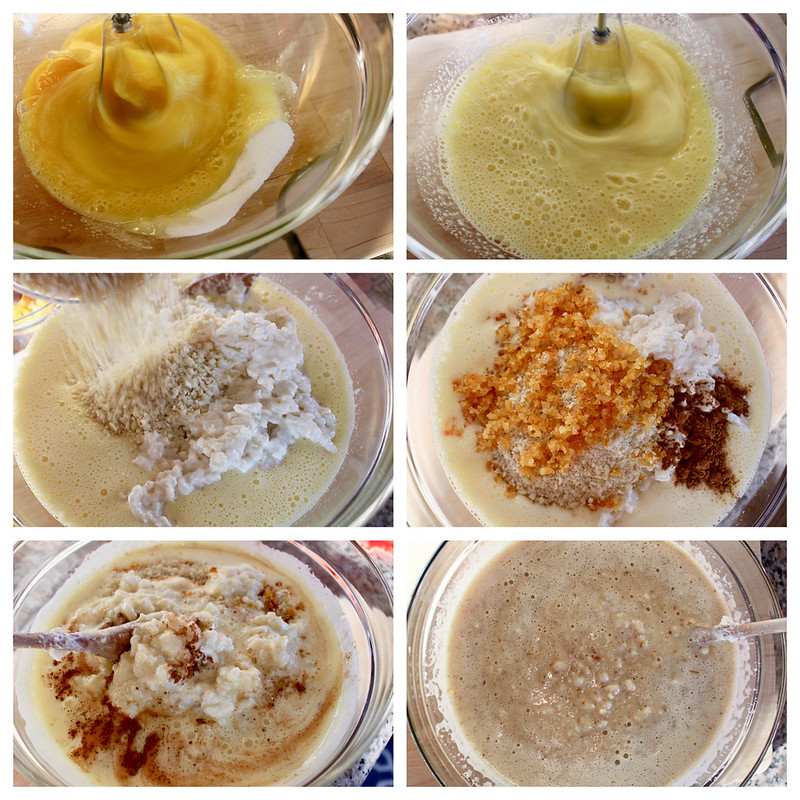

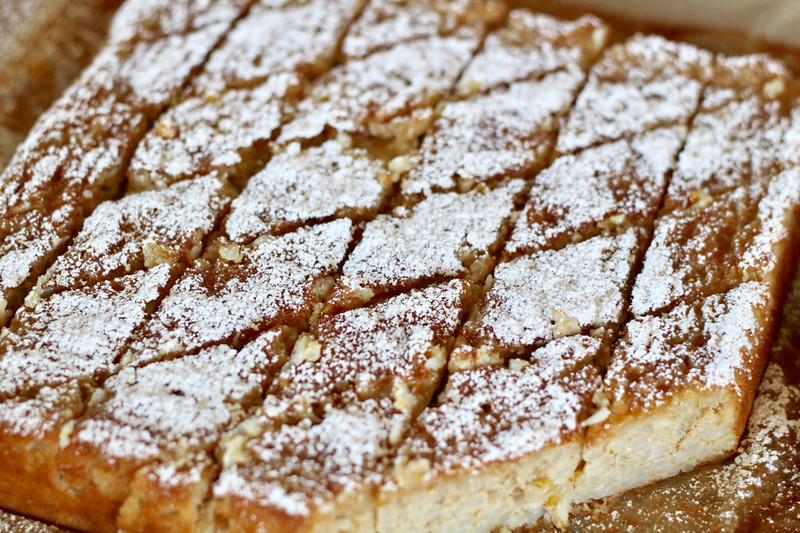
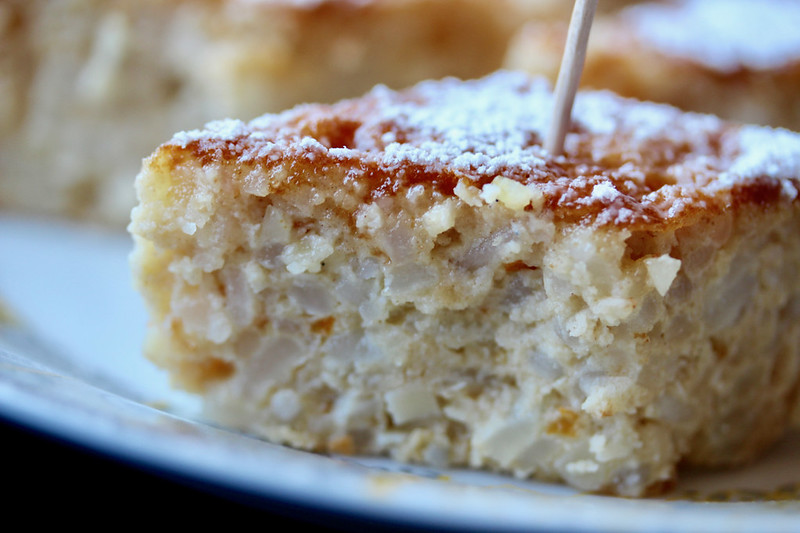


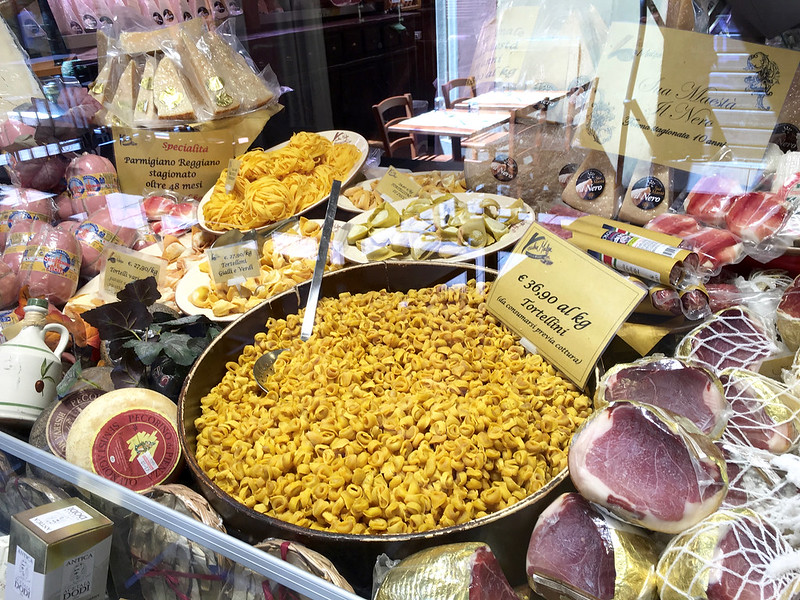
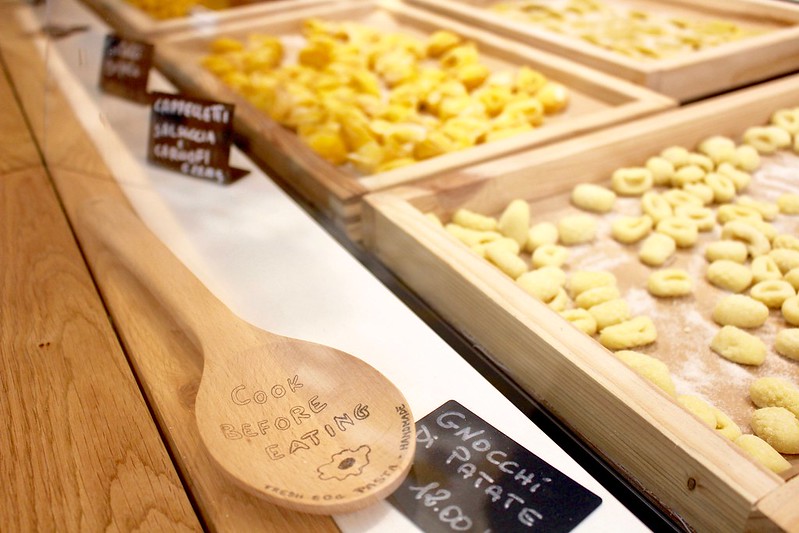












One Response